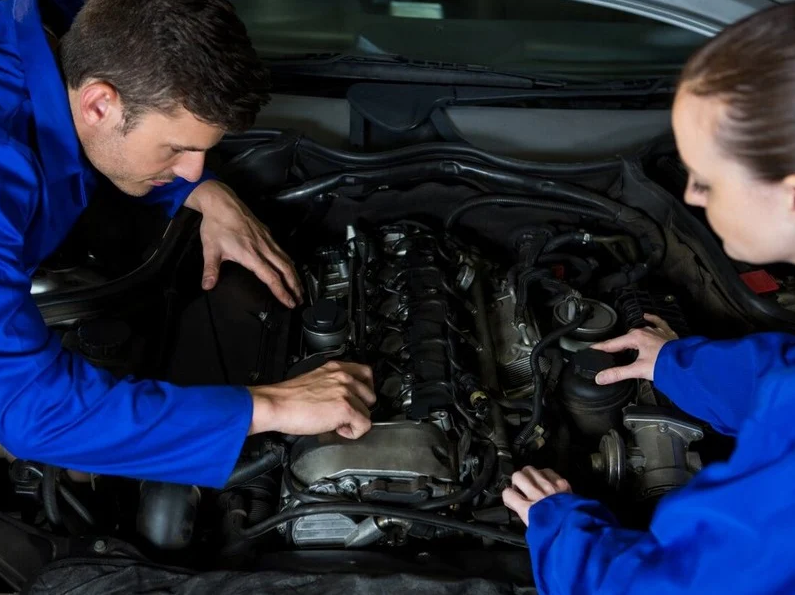
How Do I Replace a Cabin Air Filter and How Often?
A cabin air filter plays a huge role in a car's heating, air conditioning (HVAC), and ventilation system, helping maintain clean air inside your vehicle. A clogged filter can trap dust, pollen, and other allergens, making your rides less comfortable, especially for allergy sufferers. But how often should you replace your cabin air filter, and how do you do it yourself?
How Often to Replace Your Cabin Air Filter
It is highly recommended to check your vehicle's owner's manual for the specific recommended replacement schedule for your car. Generally, most manufacturers suggest replacing the cabin air filter every 15,000 miles or once a year.
However, you might need to replace it more frequently depending on your driving conditions. Here are some factors to consider:
Dust and Pollen Levels
- High Dust: Dusty environments, like construction zones or desert areas, bombard your car with tiny particles. These particles quickly clog the filter, reducing its ability to trap allergens and pollutants.
- High Pollen: During pollen seasons, the air can be thick with pollen grains. These can easily overwhelm the filter, causing restricted airflow into the passenger compartment and potentially triggering allergies for passengers.
Off-Road Driving
- Dirt Roads: Off-road adventures are a great way to explore nature, but they come with a cost to your cabin filter. Dirt roads kick up a cocktail of dust, sand, and other debris that the filter has to contend with. This heavy workload clogs the filter rapidly, reducing its effectiveness.
- Mud and Moisture: Off-roading can also expose your car to mud and moisture. While the filter itself isn't designed to handle liquids, a dirty air filter with trapped moisture can create a breeding ground for mould and mildew, leading to unpleasant odours in the cabin.
Number of Passengers
- More Passengers, More Breathing: The more people in your car, the more they breathe in air and expel CO2. This increases the workload on the cabin air filter, as it needs to work harder to clean and circulate fresh air for everyone.
- Increased Allergens: With more passengers, the potential for allergens like dust, pet dander, and even food crumbs also increases. A clogged filter won't be able to handle this extra load effectively, leading to discomfort for allergy sufferers.
Signs Your Cabin Air Filter Needs Replacing
Even if you haven't reached the recommended replacement interval, here are some signs that might indicate your cabin air filter needs attention:
- Weak airflow from the vents
- Unpleasant odours in the cabin
- Dust building up on the interior surfaces
Cabin Air Filter Replacement: A Step-by-Step Guide
Keeping your car's cabin air filter clean is a breeze with a little DIY know-how. Here's a detailed breakdown of the process to help you get started:
Consult Your Owner's Manual
Before diving in, grab your car's trusty owner's manual. It's the goldmine of information for this specific task. The manual will pinpoint the exact location of your cabin air filter. Some cars have it tucked behind the glove box, while others might have it under the dashboard. The manual will also provide detailed instructions specific to your car model for removing and replacing the filter. Following these car-specific instructions ensures a smooth and successful filter change.
Gather Your Tools
The good news is you probably won't need a toolbox full of fancy equipment for this job. In most cases, the process is tool-free. However, a pair of gloves can be your handy companion. The old filter might be dusty or grimy, and gloves can help keep your hands clean.
Locate the Filter Compartment
Now that you've consulted the manual and have your gloves on (optional), it's time to find the filter's location. Refer back to the manual's instructions to locate the specific compartment in your car. As mentioned earlier, it's commonly behind the glove box or under the dashboard. You might find a panel or cover that needs to be gently unclipped or unscrewed to access the filter.
Remove the Old Filter
With the filter compartment open, you'll see the old cabin air filter. Carefully pull it out. Be prepared for some dust to escape, especially if the filter is overdue for replacement. Consider disposing of the old filter in a sealed plastic bag to minimise spreading the dust.
Install the New Filter
Unbox your new cabin air filter. Make sure it matches the size and type recommended for your car model. The new filter will likely have arrows printed on its side indicating the airflow direction. Align the arrows on the new filter with the airflow arrows inside the filter compartment (as specified in the manual). This ensures proper air circulation within your car. Once aligned, gently slide the new filter into the compartment, making sure it sits snugly in place.
Close the Compartment
With the new filter securely positioned, close the compartment. Following the reverse steps you used to open it, snap the cover back on or screw the panel back into place. Ensure everything is secure to prevent dust from bypassing the filter.
Filters and More Can Help
Keeping cabin filters clean is a simple yet effective way to improve a car's air quality and ensure a more comfortable ride for everyone.
If you're unsure about any part of the process or would prefer professional assistance, Filters and More can help! We offer a wide variety of cabin filters for different car models. Our knowledgeable staff can also answer any questions you may have about replacing your filter.




